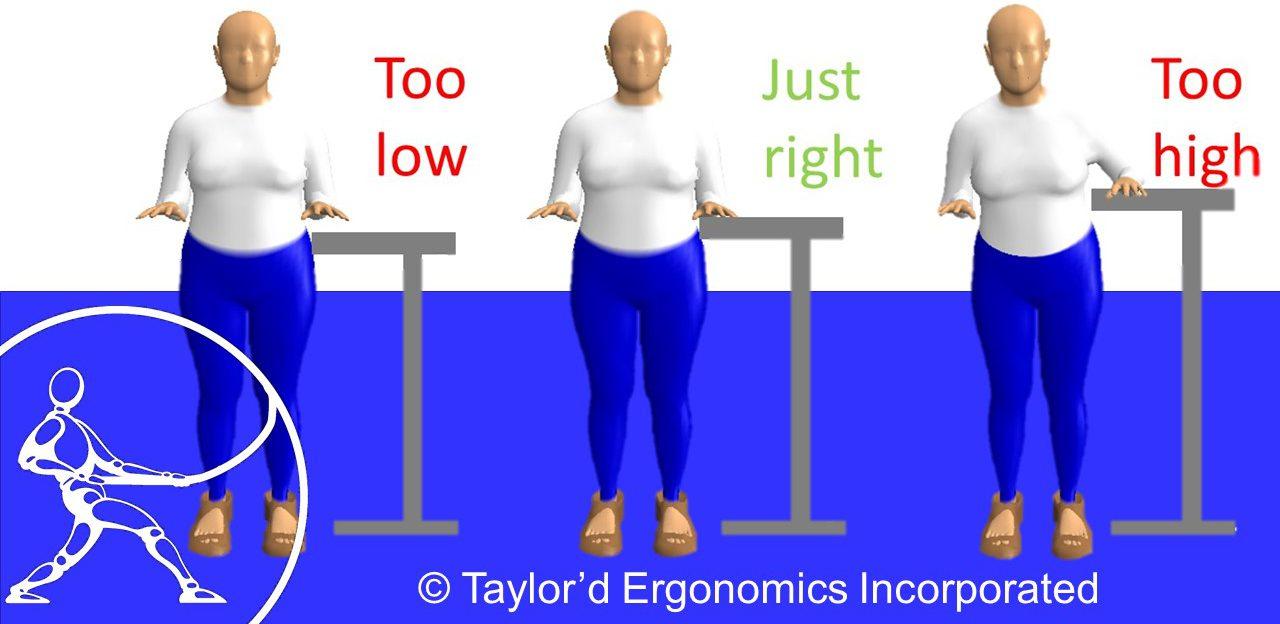Step-by-step instructions are important communication tools in business, and elsewhere. If you’ve ever assembled a bookcase, you appreciate the value of a good task analysis, which forms the basis for good instructions. In the world of ergonomics, we use task analysis in physical/cognitive demands analysis (PDA/CDAs), and to develop training.
First, training….Your company may have invested in adjustable equipment such as office chairs, sit/stand desks, hoists, lift tables, or height-adjustable platforms. If you’re disappointed in how well these have been adopted, consider the possibility that workers simply don’t know how or why to use these devices. The first step is to write clear and concise, step-by-step instructions for making the desired adjustment. If you’re not able to articulate the steps, workers likely can’t figure them out on their own.
A second important use for task analysis is in completing PDA/CDAs, where we need to describe the step-by-step process that the worker follows to complete the job. Then we can describe the physical and cognitive demands associated with each major step.
I prefer to do task analysis while I’m physically watching the job or task – I can make notes and ask questions and move around to see from different perspectives. I find it helpful to ask someone who is completely unfamiliar with the equipment or job to read my instructions and point out to me what I have assumed. I also find it useful to let my list age for a few days….sometimes it starts to smell! (I mean, sometimes I realize I did a stinky job, assuming way too much, or getting things out of order.)
Here is an example of a task analysis for the task of adjusting the standing height of a sit/stand desk. The goal is to adjust the height of the surface to standing elbow height.
- Stand at your sit/stand table (desk).
- Adjust the table height, using the up/down buttons, until the top surface is at approximately waist height.
- To fine-tune the height, turn 90 degrees, so one arm is close to the table. Stand with feet shoulder-width apart, with your back straight, arms relaxed at your side, and head balanced over your body.
- Bend your elbow to 90 degrees.
- If your elbow just touches the top of the table, then it is adjusted perfectly.
- If there is a gap between your elbow and the table, raise the table to close the gap.
- If your elbow rests on the table but your shoulder is raised, or your elbow has moved away from your body, lower the table.
So many words for such a simple task! Now you understand why graphics are so important! Above this blog, I’ve shown three reference graphics for table height. The graphics don’t stand alone, but they certainly help the reader understand the text.
A solid task analysis forms the basis for excellent instructions, training, and PDA/CDAs. Join Josie on January 6 and 7 to learn how to do task analysis and take effective photos, during our Physical and Cognitive Demands Analysis workshop.
Interested in learning how to use a sit-stand desk effectively? Purchase a licence for our sit-stand package here. Our new e-learning will be available in our store soon!


